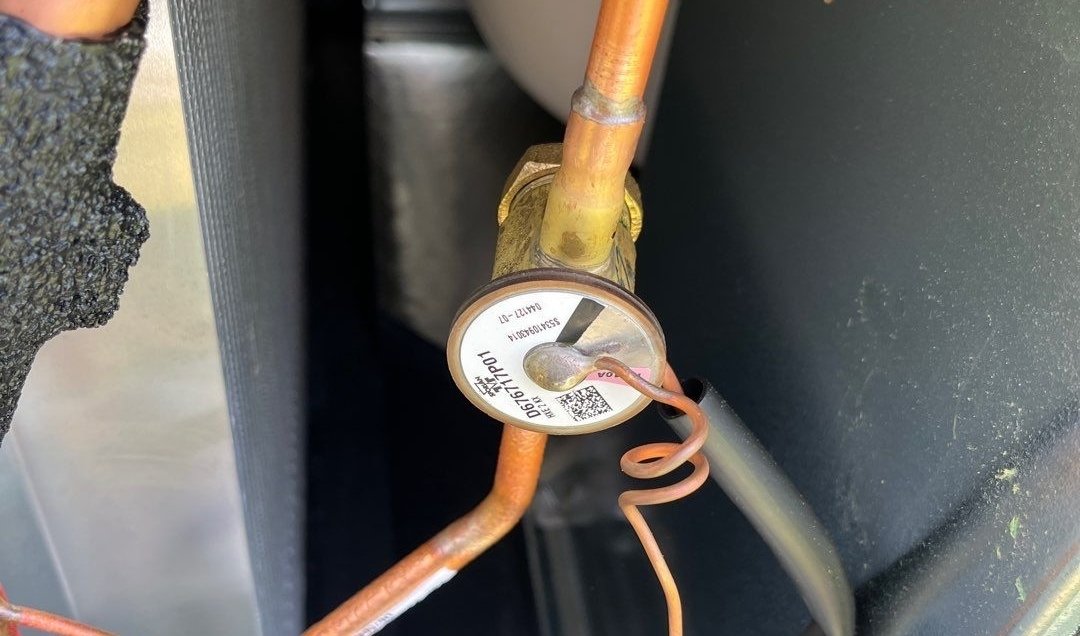What You Need to Know About Air Conditioning Refrigeration Valves
During the hottest summer months, your family’s comfort and health rely heavily on your air conditioning system. But how much do you really know about it?
Some homeowners may understand what certain components of their AC units do. The compressor and the condenser, for instance, are commonly understood. But what about the refrigeration valves?
The refrigeration valve, or expansion valve, is critical to your AC system’s health. By understanding exactly what it is and how it works, you’ll be able to better address problems with your air conditioning. Today, let’s explore this topic along with some of the most common issues that affect expansion valves.
What is an Air Conditioner Refrigeration Valve?
Service valves
Your home’s air conditioning system relies on a number of components to operate properly. One of the most important of these is the refrigeration valve.
Refrigeration valves come in a variety of shapes and sizes and go by quite a few names, including:
· Retention valve
· Expansion valve
· Thermal expansion valve
· Thermostatic expansion valves
· Refrigeration valves
· Refrigeration check valve
· Air conditioner service valve
· Air conditioner check valve
· Reversing valves
How it Works
Firstly, you need to understand the direct relationship between temperature and pressure. As the pressure of refrigerant increases, so does its temperature. This happens as the refrigerant passes through the AC unit’s compressor. But this relationship also works in the inverse – as the refrigerant’s pressure decreases, it also cools down.
All of these valves one way or another release pressure from the refrigerant in your system. Once the pressure drop occurs, it returns to a liquid refrigerant form and cools down. Then, the cold refrigerant is able to cycle through the evaporator coil. Air blows over the evaporator coil which is filled with cooled, low-pressure refrigerant. Because refrigerant absorbs excess heat, pressure begins rising again and passes through to the outdoor unit where heat is released through the condenser coil.
What is a Thermostatic Expansion Valve?
Thermostatic expansion valves (TXV) (also called the thermal expansion valve) are some of the many metering devices most commonly found in systems of higher capacities. The thermal expansion valve is a precision metering device that works to regulate the flow of liquid refrigerant in your air conditioning system in response to the system’s evaporator coil. Thermostatic expansion valves have a main function: to prevent the reduction of cooling efficiency in your system when the compressor stops working properly. If the compressor fails, high temperature and high-pressure steam could flow back into the evaporator, leading to some serious issues with your AC unit.
Special Uses for Refrigeration Valves
Your local HVAC technicians can learn a lot about the state of your air conditioner through your expansion valve. Technicians can access them on the high pressure and low-pressure sides of your AC unit and safely remove refrigerant in case of overcharging. Additionally, they can force new refrigerant into the liquid line if you need replacement or simply add some if there has been a leak. These valves also enable technicians to determine if there is excess liquid refrigerant or a buildup of pressure in the system.
Common Issues with Service Valves
Increases in Discharge Temperature
Leaks in your unit’s compressor service valve lead to shorter cycling of the liquid refrigerant, thus increasing the discharge temperature. As cycles become shorter and shorter, discharge temperatures increase as they’re subjected to the heating cycle more and more. Technicians can tell if you have a leak in the service valve if there is an increase in the discharge temperature. Keeping a constant monitor of these temperatures is a great way to stay on top of potential liquid refrigerant leaks.
High Condenser Subcooling
If you have a leak in your compressor service valve, the active refrigerant will either remain in the condenser or the receiver. The longer this goes unchecked, the higher Subcooling in the condenser becomes which prevents refrigerant from traveling through your system. Over time, this can lead to significant damage throughout your system.
High Suction Pressure
Suction valves, another counterpart to expansion valves and thermal expansion valves, are used to remove excess liquid refrigerant superheat. If your valve isn’t seated correctly, suction pressure can quickly rise. This can lead to a refrigerant leak from your compressor’s cylinder back into the suction line. The more refrigerant passes into the suction lines, the higher the pressure rises, leading to potential system failure.
Higher Refrigerant Superheat
If you have a minor issue with your refrigeration valve, you may not have a problem with refrigerant superheat. But if you have an ever-increasing leak, you might run into major problems. Superheating is when an excessive amount of vapor goes well past the boiling point – a sign of insufficient refrigerant. If you don’t have enough refrigerant flows when it reaches the thermostatic expansion valve, you’ll run into refrigerant superheat.
The Servicing and Leak Detection Process
Without regular service for your HVAC system, you might end up spending a lot more down the line on repairs. Plus, you’ll miss out on the opportunity to save energy and reduce utility costs each month. There’s no need to endure inadequate airflow and uncomfortable temperatures due to faulty equipment.
By scheduling routine maintenance for your air conditioning system, you can have your technician conduct leak and pressure tests on a regular basis. Maintaining a controlled flow of liquid refrigerant, you’ll guarantee normal spring pressure drop and ensure your system continues operating at optimal efficiency. The simplest way to identify refrigerant leaks and pressure increases is to use soap – apply it to the joints, connections, and fittings and look for bubbles. However, your HVAC specialist will likely have an electronic detector that can identify particular chemicals in the refrigerant.
Knowing how your AC system works is a great way to achieve peace of mind. If you’d like to learn more about your AC system’s expansion valve or anything else related to maintaining your home HVAC system, reach out to the professionals.
Conclusion
In conclusion, understanding the intricacies of air conditioning refrigeration valves, particularly the expansion valve, is essential for maintaining the health and efficiency of your AC system. These valves play a critical role in regulating the flow and pressure of refrigerant, ensuring that your air conditioning system operates effectively. Regular maintenance, including leak detection and pressure testing, is vital to prevent potential issues such as increased discharge temperatures, high condenser subcooling, rising suction pressure, and refrigerant superheat. By staying informed about how these components function and ensuring timely servicing, homeowners can enjoy consistent comfort, avoid costly repairs, and save on energy costs. Remember, the key to a well-functioning air conditioning system lies in understanding its components and investing in regular maintenance. For more detailed information and professional assistance, reaching out to HVAC specialists is always a wise decision.
Frequently Asked Questions about Air Conditioning Refrigeration Valves
What is the purpose of an expansion valve in an air conditioning system?
Answer: The expansion valve, also known as a refrigeration valve or thermal expansion valve (TXV), plays a crucial role in an air conditioning system. It regulates the flow of refrigerant into the evaporator coil. By controlling this flow, the expansion valve adjusts the refrigerant pressure and temperature, ensuring efficient cooling and preventing issues like compressor overload or refrigerant flooding.
How can I tell if my expansion valve is malfunctioning?
Answer: Signs of a faulty expansion valve include unusual fluctuations in indoor temperature, ice formation on the evaporator coil, or a noticeable decrease in the cooling efficiency of your AC system. Inconsistent cooling, where certain areas are cooler than others, can also indicate a problem. If you notice these symptoms, it's advisable to contact a professional HVAC technician for a thorough inspection and potential repair.
What regular maintenance should be performed on AC refrigeration valves?
Answer: Regular maintenance for AC refrigeration valves typically involves checking for leaks, ensuring proper valve operation, and verifying correct refrigerant levels. Technicians may use methods like soap testing or electronic detectors to identify leaks. It's also important to ensure the valves are clean and free from debris. Regular system check-ups, ideally before the onset of peak summer months, can help maintain optimal performance and prevent unexpected breakdowns.




